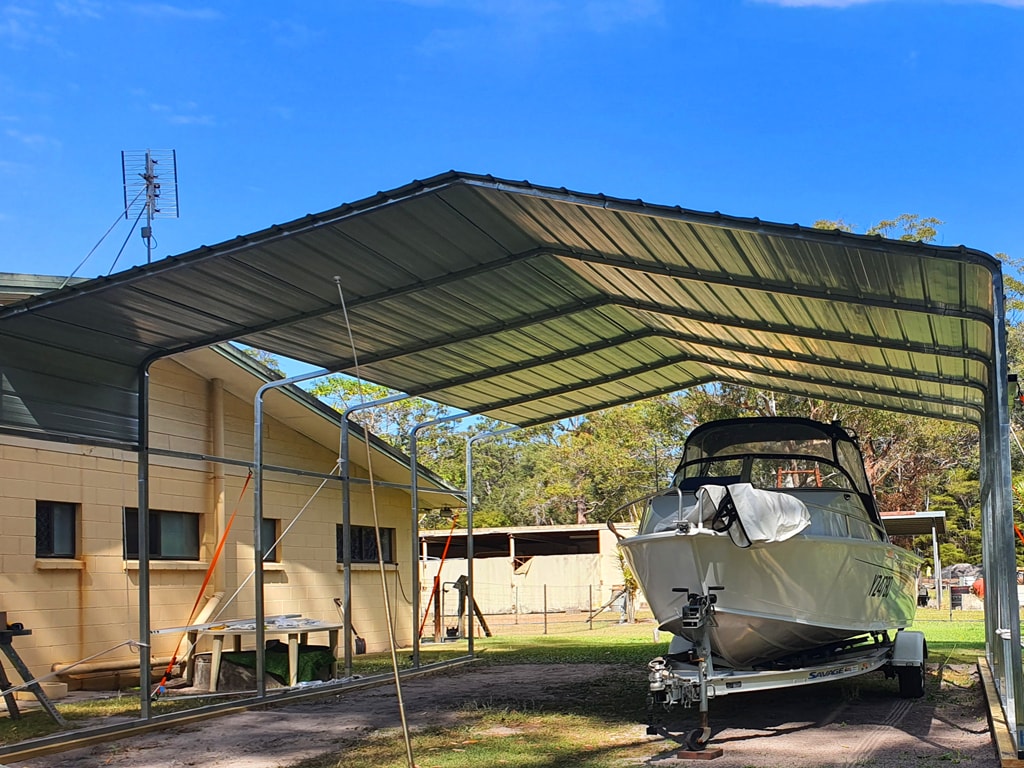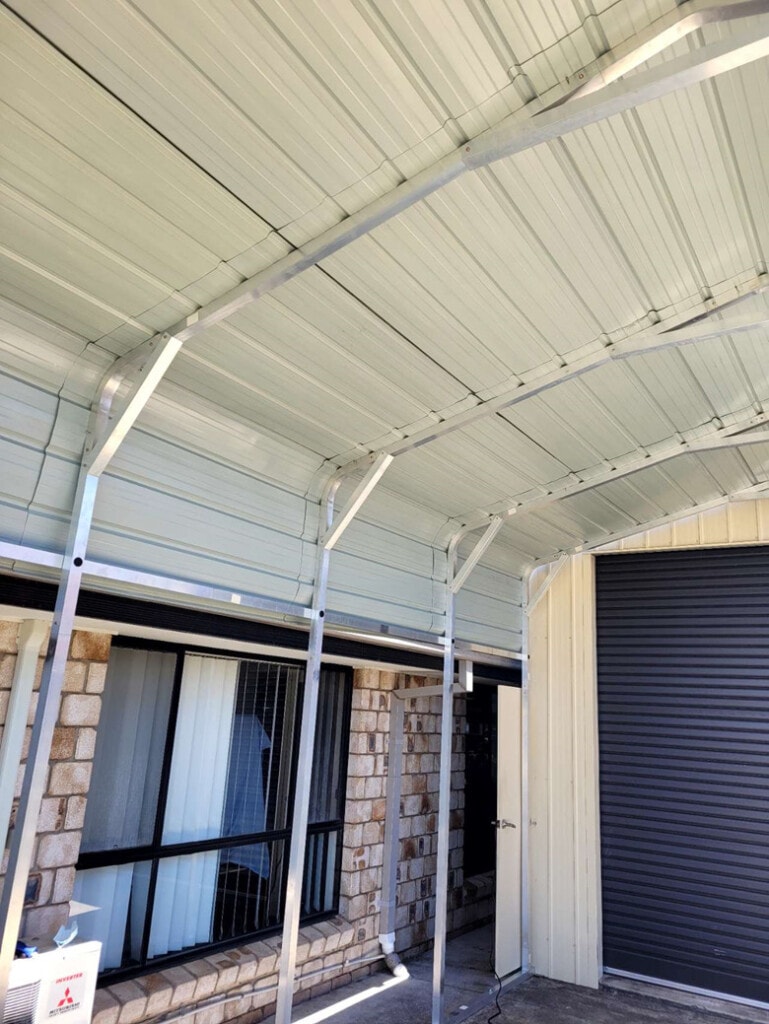Carport Roof Material Types and Selection
Basic factors
Durability: Durability is the primary concern. Materials should be resistant to a variety of weather conditions, including extreme temperatures, precipitation, and UV rays. And resists corrosion, fading and cracking. Also consider expected service life, as some materials may last longer than others, affecting cost and maintenance expenses.
Environmental factors: The local climate greatly affects the choice of carport roofing materials. Certain materials are suitable in humid or dry climates or specific thermal conditions. In areas with high humidity or frequent rainfall, it is best to use anti-rust materials such as galvanized steel or aluminum. And in areas with strong sun exposure, materials with strong UV resistance can be used to prevent degradation and fading (such as certain polycarbonates or treated metals). Year-round cold weather requires roofing materials that can withstand the weight of snow and resist cracking in freezing temperatures.
Structural Compatibility: Compatibility and adaptation of roof materials and carport structures. Some materials may be too heavy for the existing frame, while others may not provide enough support or stability. Ensuring structural compatibility can prevent future building problems and enhance safety.
Fire Resistance: Fire resistance is an important safety factor. Materials should comply with standard fire safety regulations to reduce risk. This is especially important in areas prone to high temperatures or where fire hazards exist.
Acoustic Properties: Consider the acoustic properties of roofing materials, especially in areas where noise pollution is present. Some materials provide better sound insulation, reducing the impact of rain, hail or external noise.
Carport roof material specification
| Material | Thickness (mm) | Weight (kg/m²) | Lifespan (years) | Pros & Cons |
|---|---|---|---|---|
| Metal Roofing | 0.5 – 1.5 | 1-3 | 40-70 | Pros: Durable, weather-resistant, recyclable. Cons: Can be noisy during rain, potential for denting. |
| Polycarbonate Roofing | 4 – 10 | 0.8-1.2 | 10-20 | Pros: Lightweight, UV resistant, lets light through. Cons: Less durable, can discolor over time. |
| Asphalt Shingles | 3 – 5 | 10-15 | 15-30 | Pros: Affordable, easy to install, versatile styles. Cons: Shorter lifespan, susceptible to weather damage. |
| PVC and Vinyl Roofing | 1.5 – 3 | 1.3-1.5 | 15-30 | Pros: Water-resistant, flexible, low maintenance. Cons: Can become brittle over time, less eco-friendly. |
| Fiberglass | 1 – 4 | 0.9-2 | 20-30 | Pros: Corrosion-resistant, allows light transmission. Cons: Less durable than other materials, fragile. |
| Wood Shingles | 10 – 20 | 3.5-5 | 20-30 | Pros: Aesthetically pleasing, natural insulator. Cons: Requires maintenance, susceptible to rot and insects. |
| Concrete Tiles | 20 – 30 | 40-50 | 30-50 | Pros: Extremely durable, fireproof, low maintenance. Cons: Heavy, may require reinforced roof structure. |
FAQ
Metal roofing, particularly steel or aluminum, is often considered the most durable. It withstands harsh weather, is resistant to rot and pests, and can last up to 70 years. However, its durability also depends on proper installation and maintenance.
While DIY installation is possible for some materials like asphalt shingles or certain polycarbonate panels, professional installation is recommended for materials that require specialized tools or techniques, like metal or concrete tiles. Professional installation ensures safety, adherence to building codes, and optimal performance of the roof.
In high-wind areas, it’s important to choose materials with high wind resistance, like metal roofing or certain engineered shingles. These materials should be tested for wind resistance and installed according to specifications that enhance their ability to withstand high winds, such as using appropriate fastening techniques.
Yes, materials like metal roofing are recyclable and can be an environmentally friendly option. Additionally, choosing materials with high energy efficiency can reduce your carbon footprint. Some materials are also made from recycled content, further reducing environmental impact.
The right carport roof can enhance the property’s aesthetic appeal and functionality, potentially increasing its value. Durable, low-maintenance materials like metal or concrete tiles are often attractive to potential buyers. The roof’s appearance, integration with the property’s overall style, and energy efficiency can also impact property value.
conclusion
In conclusion, there are various factors to consider when choosing the right carport roofing material. Including conditions such as material type, durability, maintenance requirements, environmental impact and cost. At the same time, it is also necessary to consider the actual application scenarios and choose a more cost-effective carport roof for different purposes of the carport.








